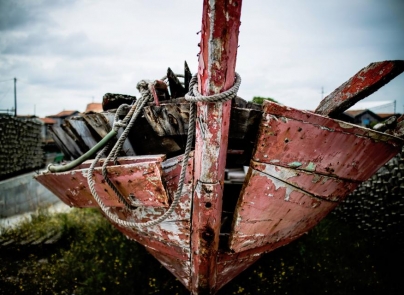John Hus’s Company of Women

John Hus’s Company of Women
John Hus, the Bohemian Reformer who was condemned as heretic at the Council of Constance, was supported by a large number of women. This was, in some ways, unusual. The same couldn’t be said, for example, in the case of John Wycliffe, in England. One possible reason was that Hus valued the active role of women in the church more than most medieval theologians.
Born into a peasant family around 1372, Hus often mentioned his mother as a source of encouragement in his faith and a Christian example. Even as late as 1413, when Hus faced the worst opposition against him, he confided in his mother, who replied by quoting words of comfort from Psalm 118.
Uncommon Respect for Women
The positive influence Hus’s mother had in his life might be partly responsible for the great respect he showed toward women in an age when major theologians were still debating whether women were made in God’s image, and discouraged them from reading the Bible. After all, they said, Adam was created first, directly by God, while Eve was a by-product of Adam, made from one of his ribs. (Never mind that Adam was actually made from dust).
Hus shared none of these doubts. Instead, he encouraged women to study the Scriptures, to speak to others about Christ, to participate in church singing, and to admonish those who needed correction, including priests. “Listen, daughter, and incline your ears and know that you are a person and that you have a body and a soul,” he wrote in 1412. “Therefore remember, that God created you in his likeness.”[1]
He also refused to adhere to the common belief that women were to blame for many sins of men, particularly sins of lust. In his condemnation of sin, both in writing and from the pulpit, Hus included men and women equally.
Some of Hus’s Supporters
Around 1402, when Hus began preaching in Czech in Bethlehem Chapel in Prague, his message of simple faith, free from the corruptions of most clergymen of his time, resonated with the masses. His sermons attracted about three thousand people, and his insistence in giving primacy to Scriptures gained him a group of faithful supporters who advocated for him – even demonstrating in the streets – when other clergymen began their opposition.
Some of his early supporters were Beguines, women who lived simple lives, usually in communities, devoting themselves to religious devotion, to the care of the needy, and to the education of young girls, without taking formal vows of poverty, chastity, and obedience.
Hus also enjoyed the support of the nobility, who used their means and their right of patronage to place Hussite preachers in the churches in their areas. This included Queen Sophia of Bavaria, second wife of King Wenceslas. When Hus came under attack, she wrote letters to Rome, stating that she had been profiting from Hus’s sermons at Bethlehem Chapel and asking that he and other preachers like him be allowed to preach freely. After Hus was condemned to death at the Council of Constance in 1414, she continued to support his followers. But in 1419, pressured by demands by Pope Martin V to rid her kingdom of heretics and by the instability that the division between Catholics and Hussites had created within her kingdom, she withdrew her support, siding with Rome.
Among the most prominent supporters of Hus was Anna Mochova, the second wife of John of Ustí, also a Hussite. In 1412, when Hus left Prague in order to spare the population from the punishment the local bishop had inflicted on his account, John and Anna provided him with a place of refuge in their Kozi Hradek castle in southern Bohemia. It was in this castle that Hus wrote most of his Czech works, including some which he addressed to his female followers in Prague.
After John’s death, Anna continued to support Hus and used her right of patronage to assign Hussite preachers to the churches in her area. In this, she was fiercely opposed by Ulrich, her husband’s son by a first marriage. This opposition, together with Anna’s struggle to pay off debtors, caused Hus to move to the castle of another supporter.
After Hus’s death, Anna kept fighting for his cause. At a time when King Wenceslas had begun to back the church authorities in ridding the churches of Hussite preachers, she fought back by expelling a Catholic priest from a chapel in her area and replacing him with a Hussite preacher. It was this unrelenting persistence that prompted some of her opponents to compare her to Old Testament Jezebel.
When she died, Ulrich took over the estate and reversed some of her actions. In spite of this, the Hussite movement continued to flourish in the region.
Anna’s son Procop, instead, joined a band of local peasants in a rebellion against Ulrich. After capturing the town, they claimed the nearby abandoned fortress Hradiste and called it Tabor. These rebels became known as the Taborites – a radical faction of the Hussite movement.
Another supporter of Hus, also of noble origins, was Margaret of Peruce, who moved into a Beguine community of Prague, near Bethlehem Chapel. While living in poverty, Margaret maintained her right to appoint preachers, and filled the pulpit in the village of Chlumcany with a student named Egidius, who had just graduated from the University of Prague (also a center of reformist ideas) and had become a follower of Hus.
Catherine Vraba, widow of Conrad Kapler, Lord of Sulevice, also used her right of patronage to place in the main Prague cathedral a priest who would follow Hus’s principles of giving primacy to the Scriptures, preaching in the language of the people. She also established a community of women similar to those founded by the Beguines.
Later, when the division between Catholics and Hussites evolved into a war, many women fought alongside the men, or else provided them with food and medical care. In 1420, the authorities captured 156 armed Hussite women dressed as men, with their hair cut short.
The Aftermath
The Hussite wars were characterized by violence and excesses on all sides. They ended in 1434, when the moderate Hussite faction defeated the Taborites and agreed to submit to the king and to the Roman Catholic Church, who in turn made a few concessions. For example, the Hussite church was allowed to distribute the elements of the Lord’s Supper in both forms and to exercise greater discipline on priests and deacons, making sure they lived godly lives and preached the Scriptures. Priests were also forbidden from holding worldly possessions.
After the war, life for women returned to be what it had been before, although some preachers continued to remind their congregation that women were to be recognized as individuals equally sharing God’s image.
[1] Dcerka, in A. Molnár, ed., Mistr Jan Hus, Drobné spisy Ceské (Prague, 1985), quoted in John M. Klassen, Warring Maidens, Captive Wives, and Hussite Queens,East Europans Monographs, Boulder, 1999, 165





